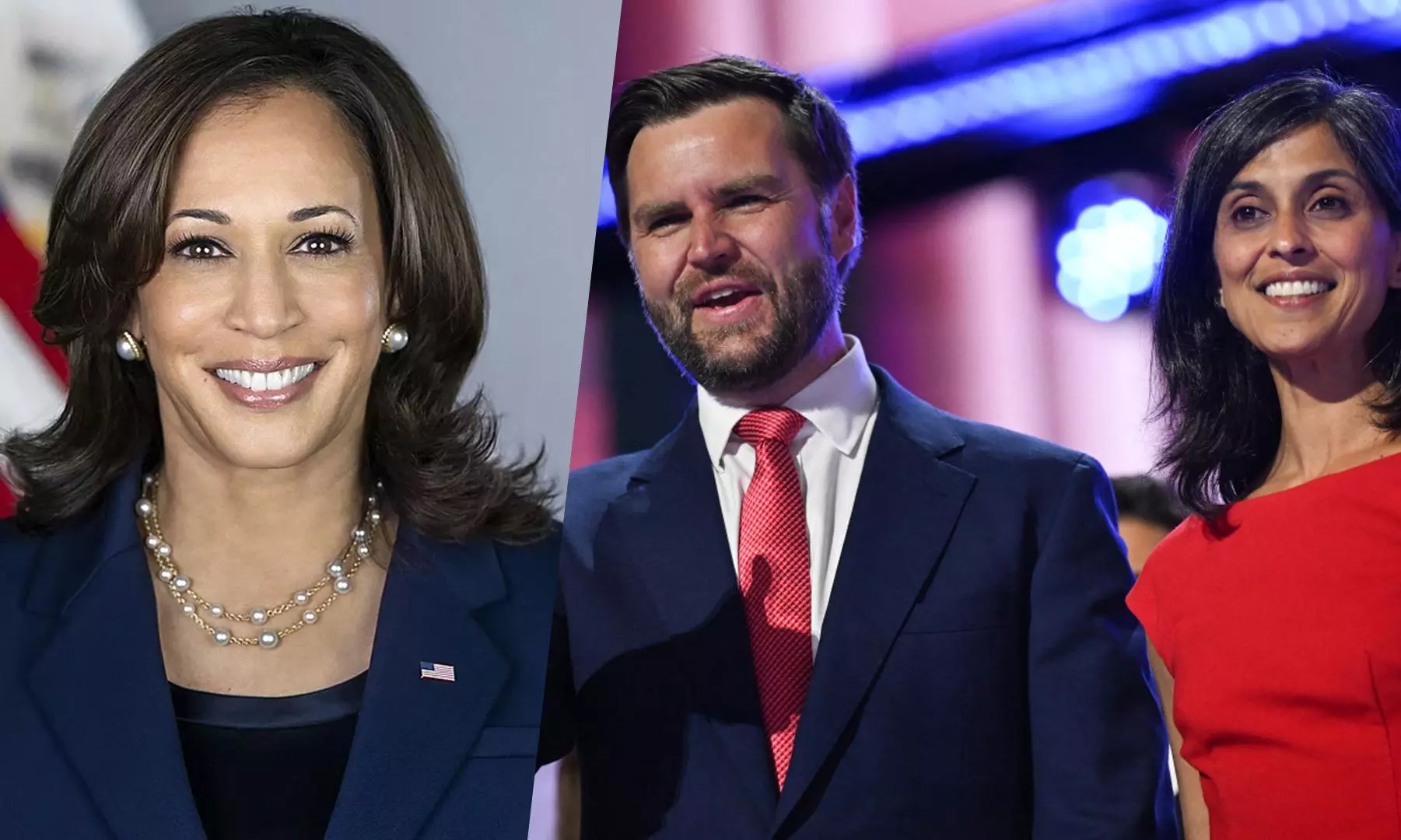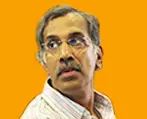
- Home
- India
- World
- Premium
- THE FEDERAL SPECIAL
- Analysis
- States
- Perspective
- Videos
- Sports
- Education
- Entertainment
- Elections
- Features
- Health
- Business
- Series
- In memoriam: Sheikh Mujibur Rahman
- Bishnoi's Men
- NEET TANGLE
- Economy Series
- Earth Day
- Kashmir’s Frozen Turbulence
- India@75
- The legend of Ramjanmabhoomi
- Liberalisation@30
- How to tame a dragon
- Celebrating biodiversity
- Farm Matters
- 50 days of solitude
- Bringing Migrants Home
- Budget 2020
- Jharkhand Votes
- The Federal Investigates
- The Federal Impact
- Vanishing Sand
- Gandhi @ 150
- Andhra Today
- Field report
- Operation Gulmarg
- Pandemic @1 Mn in India
- The Federal Year-End
- The Zero Year
- Science
- Brand studio
- Newsletter
- Elections 2024
- Events
- Home
- IndiaIndia
- World
- Analysis
- StatesStates
- PerspectivePerspective
- VideosVideos
- Sports
- Education
- Entertainment
- ElectionsElections
- Features
- Health
- BusinessBusiness
- Premium
- Loading...
Premium - Events

JD Vance's coarse comment reflects broader discussions on policy issues like childbirth, childcare and demographic shifts, which resonate both in US and South India
Kamala Harris, the Democratic nominee for the US presidency, has connections to Tamil Nadu. On the other side, JD Vance, Donald Trump’s running mate and Republican vice-presidential candidate, is gaining recognition in India due to his wife, Usha Vance, who hails from Andhra Pradesh.
Indians may take pride in the fact that whether Republicans or Democrats take power in the US, there will be an India connection.
However, it’s essential to recognise that regardless of the political landscape, leaders will ultimately put their identities aside to prioritise the needs of their nation and political agenda.
The India connection
Both Kamala Harris and Usha Vance are second-generation descendants of Indian migrants. Their families have benefited from America’s open-door policy, which attracts the world’s most talented individuals.
US polls | 9 Indian Americans running for Congress; several for state, local bodies
Raised and educated in the US, they have absorbed local values and cultures, often adapting their identities to fit various situations.
For instance, Kamala Harris identifies as African-American, reflecting her Jamaican heritage, while also celebrating her Indian roots — she made time for Diwali festivities amidst her busy campaign schedule.
‘Childless cat ladies’
Both women are being closely watched in India, but it was a remark from JD Vance referring to prominent Democratic women, including Kamala Harris (a stepmother to two adult children), as “childless cat ladies” that particularly caught attention.
This coarse comment brought to the forefront broader discussions on policy issues like demographic shifts and childcare, which resonate in southern parts of India.
In a 2021 Fox News interview, Vance lamented that “the US is being run by Democrats, corporate oligarchs, and a bunch of childless cat ladies — misery loves company”. He painted the Democratic Party as “anti-family and anti-child”.
Also read | US polls: H1-B and student visas, tariff policies at stake for Indians
Such a jibe, interpreted as an insult to the increasing number of women without children — by choice or circumstance — struck a nerve, especially given that in the 2020 elections, 63 per cent of single women voted for Joe Biden, according to CNN.
India’s population issue
The “childless cat lady” stereotype has deep roots in American culture, originating from a 1970s documentary about a mother and daughter living with 50 cats in New York, and it perpetuates a sexist narrative.
While the US and India differ significantly in GDP and per capita income, select social indicators in some southern Indian states are comparable to those in the US
Notably, southern Indian states share a fertility rate of 1.6, similar to that of America, contrasting with India’s national average of 2.0. This decline has spurred political leaders in the South to urge women to have more children.
Watch | Why US election matters to you and me | Talking Sense With Srini
Andhra Pradesh Chief Minister N Chandrababu Naidu argued this is essential for maintaining the demographic balance in the state. In a similar vein, MK Stalin, his counterpart in Tamil Nadu, referenced an old Tamil saying, “padhinaarum pettru peru vazhvu vazhga”, emphasising the importance of diverse forms of wealth rather than merely focusing on large families. He acknowledged a societal shift towards small families for prosperity and is seeking to reverse this trend, as lower population numbers lead to reduced representation in the Lok Sabha.
Childcare issues in US, India
Interestingly, while Vance denounces declining birth rates as a “civilisational crisis”, advocating for “higher taxes and fewer voting rights” for childless individuals, southern Indian states already face potential reductions in parliamentary representation due to low population growth.
The calls for increased childbirth from leaders like Naidu and Stalin have sparked widespread trolling on social media, with many questioning how they would manage the costs of raising children — especially the skyrocketing school fees.
Watch | Kamala win better for Gaza, worse for Ukraine-Russia; Trump, the reverse
Unlike in the US, Indian parents do not receive tax credits for school-going children. In urban areas, working parents — particularly those with young children —struggle to balance work and life.
Daycare facilities are expensive and hard to find. Besides, their safety remains an area of serious concern. Rural India, however, has a widespread network of ‘Anganwadi’, a type of child care centre.
Demographic shift in South India
India’s current family policies have largely focused on limiting population growth due to traditional concerns about overpopulation, often at the expense of essential support for families. Regrettably, irresponsible politicians in northern India have attempted to frame lower birth rates as a communal issue, despite the lack of factual data supporting such claims.
As southern states confront their declining birth rates, they also face the pressing challenge of an aging population — those over 60 are more prevalent in these states than in the North, a trend that is set to escalate.
Also read | Stalin-Naidu's 'more children' comments shake up delimitation politics again
This demographic shift in the South also corresponds with a decline in the working-age population; for instance, the median age is roughly 30 in Tamil Nadu and Kerala while it is about 20 in Bihar and Uttar Pradesh.
Population shifts in India
In the US, Vance is pushing for legislation that would allow parents to vote on behalf of their underage children, amid bipartisan support for increased compensation for childcare.
In India, the family crisis isn’t as acute as in the US, but in urban southern areas, many elderly individuals often find themselves alone, with their children having migrated abroad for better opportunities.
Also read | Delimitation will further erode South India’s political capital: Nilakantan RS
Given the uneven demographic changes in India — with southern states feeling the impact more severely — a significant shift of people migrating from the North to the South is already a reality.
Learning from Kamala, Usha
Presently, discussions tend to focus on wage disparities between native labour and cheaper migrant labour. However, deeper issues surrounding local identity and language frequently that fuel political tensions between the North and the South need to be addressed urgently.
Both Kamala and Usha, powerful and influential, will be playing a crucial role in the policy decisions taken in that country.

